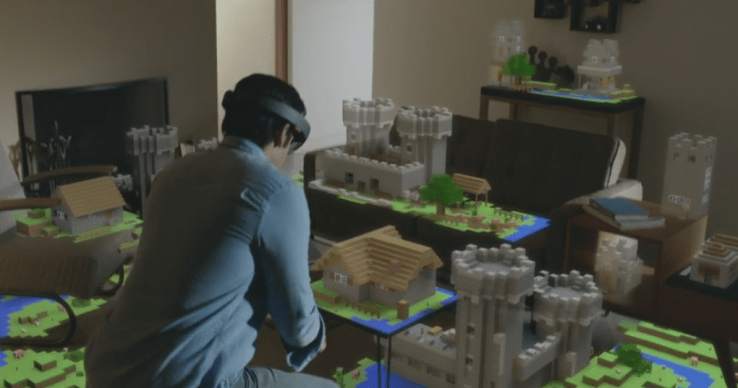 Microsoft revealed a version of Windows that blends holograms with
real world video to provide users with an augmented reality version of
their environment that blends real objects with virtual, and virtual
interface elements, information boxes and guidelines viewable via a
wearable headset device.
Microsoft revealed a version of Windows that blends holograms with
real world video to provide users with an augmented reality version of
their environment that blends real objects with virtual, and virtual
interface elements, information boxes and guidelines viewable via a
wearable headset device.Windows Holographic provides ways for engineers to see instructions overlaid directly on the objects they’re working on, Microsoft said on stage, or offers a way for architects to survey and present their designs alongside clients even when separated by great distances. If you want a look at something very similar being done by a company that’s much younger, but aiming at something similar, take a look at Sulon Cortex and what they brought to CES.

Hologram support in Microsoft’s Windows 10 software is universal, just like their new app infrastructure, which means that you can build once and use everywhere. Microsoft also pointed out that they’re working to help make this compatible with all kinds of emerging hardware on that horizon, including Oculus Rift, and Magic Leap – but they also revealed Microsoft HoloLens, a new in-house headset that will be available “within the Windows 10 timeframe.”
HoloLens is completely wireless, and features see-through lenses, spatial sound and advanced sensors. It’s designed to be a self-contained unit, and it has its own custom CPU and new Holographic Processing Unit (HPU) to work. It doesn’t even require a phone or computer to connect to wirelessly to work, and is meant to be completely independent.
To support HoloLens and Windows Holographic, Microsoft built HoloStudio, a 3D modelling tool that lets people build holograms, which they can then integrated into software or 3D print them for physical use. Microsoft demoed the tech on stage using an actual hologram of EVP Terry Myerson.
